HBP exhibition presents “Fascination Brain” in the state parliament of North-Rhine Westfalia
24 January 2020
The exhibition "Fascination Brain - the Human Brain Project" provides an insight into the research of the HBP and explores the close interplay of neuroscience and technology development with regards to the HBP's new research e-infrastructure, EBRAINS.
The exhibition "Fascination Brain - the Human Brain Project" provides an insight into the research of the HBP and explores the close interplay of neuroscience and technology development with regards to the HBP's new research e-infrastructure, EBRAINS.
After its opening in the Bundestag in Berlin in December 2019, the exhibition moved to the parliament of Germany’s most populous state North-Rhine Westfalia, where it was formally opened with a ceremony on January 21st.
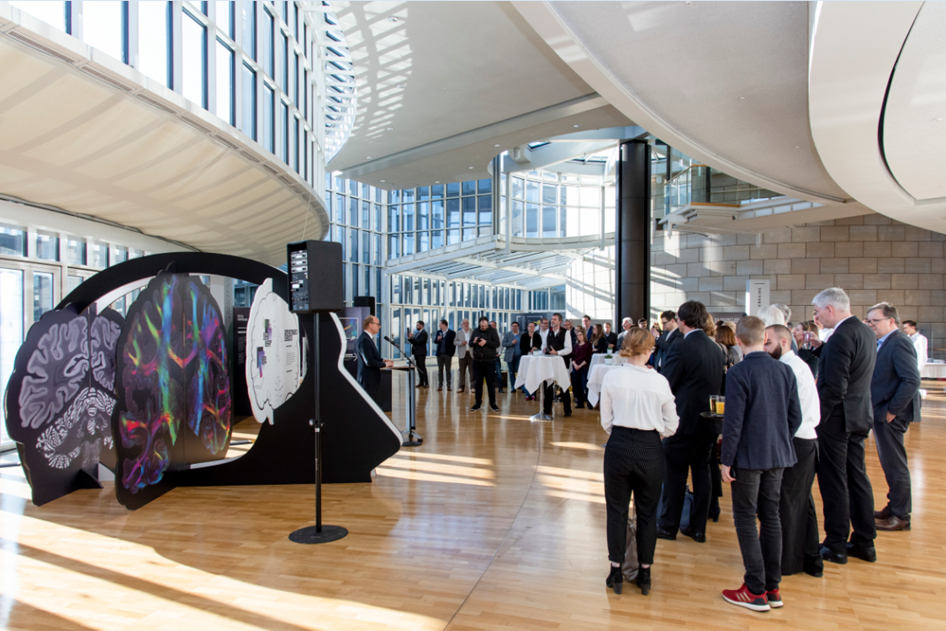
Photo © Kurt Steinhausen/Forschungszentrum Jülich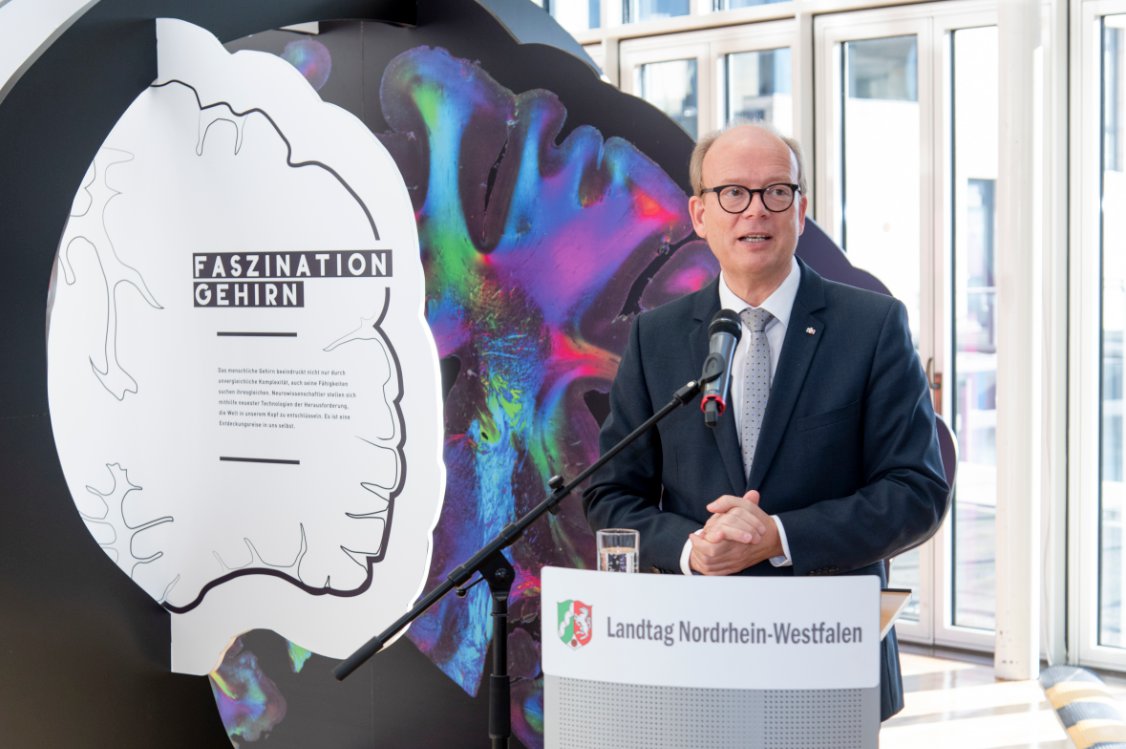
Photo © Kurt Steinhausen/Forschungszentrum Jülich
“Understanding the Human Brain in all of its complexity is one of the greatest scientific challenges of our time”, said Parliamentary President André Kuper in his welcoming speeach. “I am very happy that the citizens of North-Rhine Westfalia have the opportunity to get to know the pioneering work of scientists through this exhibition.”
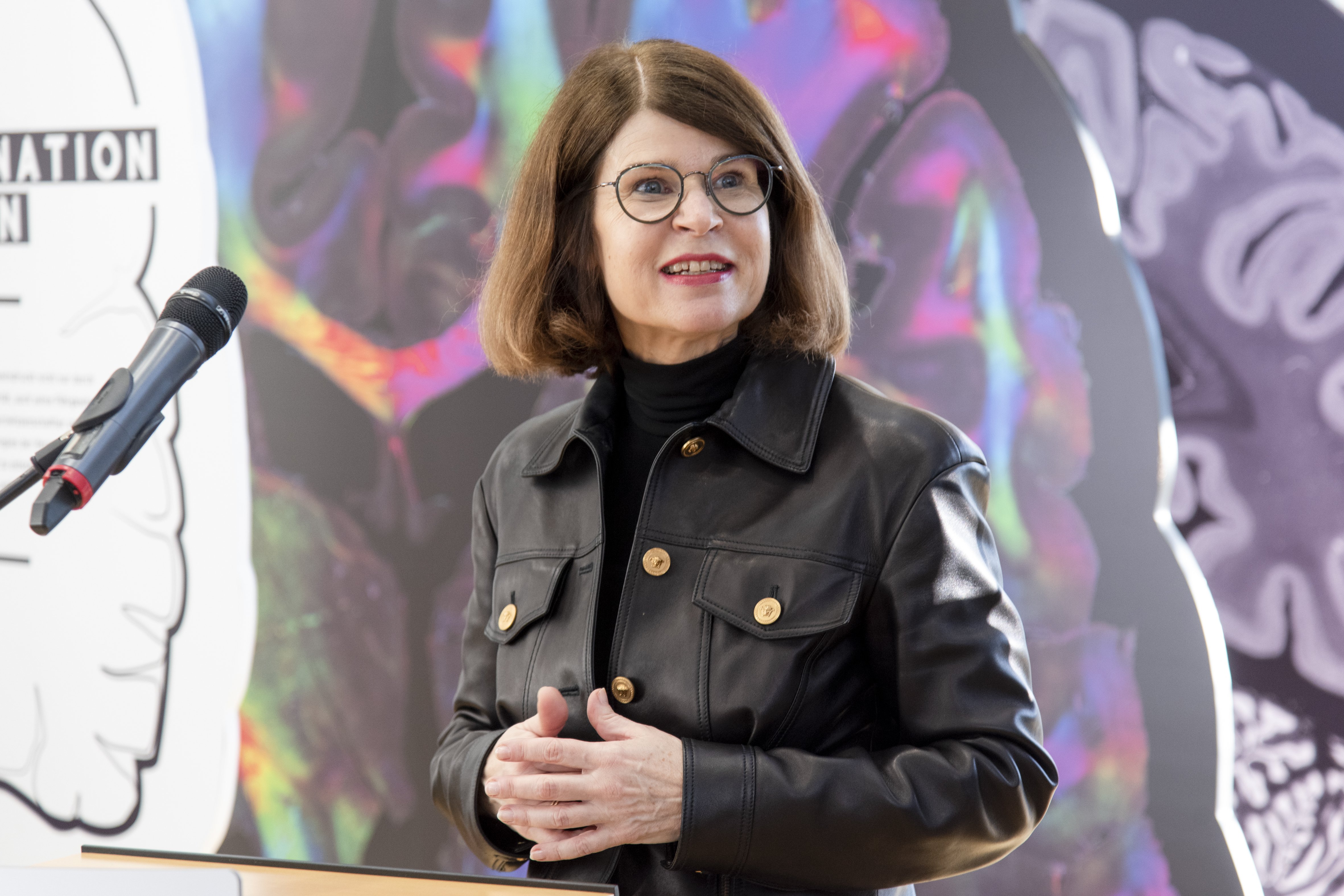
Photo © Kurt Steinhausen/Forschungszentrum Jülich
Prof. Katrin Amunts, Scientific Research Director of the Human Brain Project, gave an introduction into its scientific accomplishments and the ongoing creation of the research infrastructure EBRAINS in Europe. “It is a special pleasure for me that, after the opening in the Bundestag, we can present this exhibition in North-Rhine Westfalia, where many strong contributions to the project come from, such as the 3D Human Brain Atlas, a Google Earth of the Brain.”

Photo © Kurt Steinhausen/Forschungszentrum Jülich
Seven of the 132 HBP-partners are based in North-Rhine Westfalia, including Forschungszentrum Jülich, the German Center for Neurodegenerative Diseases (DZNE) in Bonn, Fraunhofer SCAI and the Universities of Düsseldorf, Bielefeld, Wuppertal, and Aachen.
“Tackling the enormous complexity of the brain requires technological power and a network approach”, Amunts said. “With EBRAINS we provide the platform for the next phase of brain research that converges technology and neuroscience on a new scale. Many of us are now working together to make EBRAINS a magnet for neuroscientists and technology pioneers alike”.
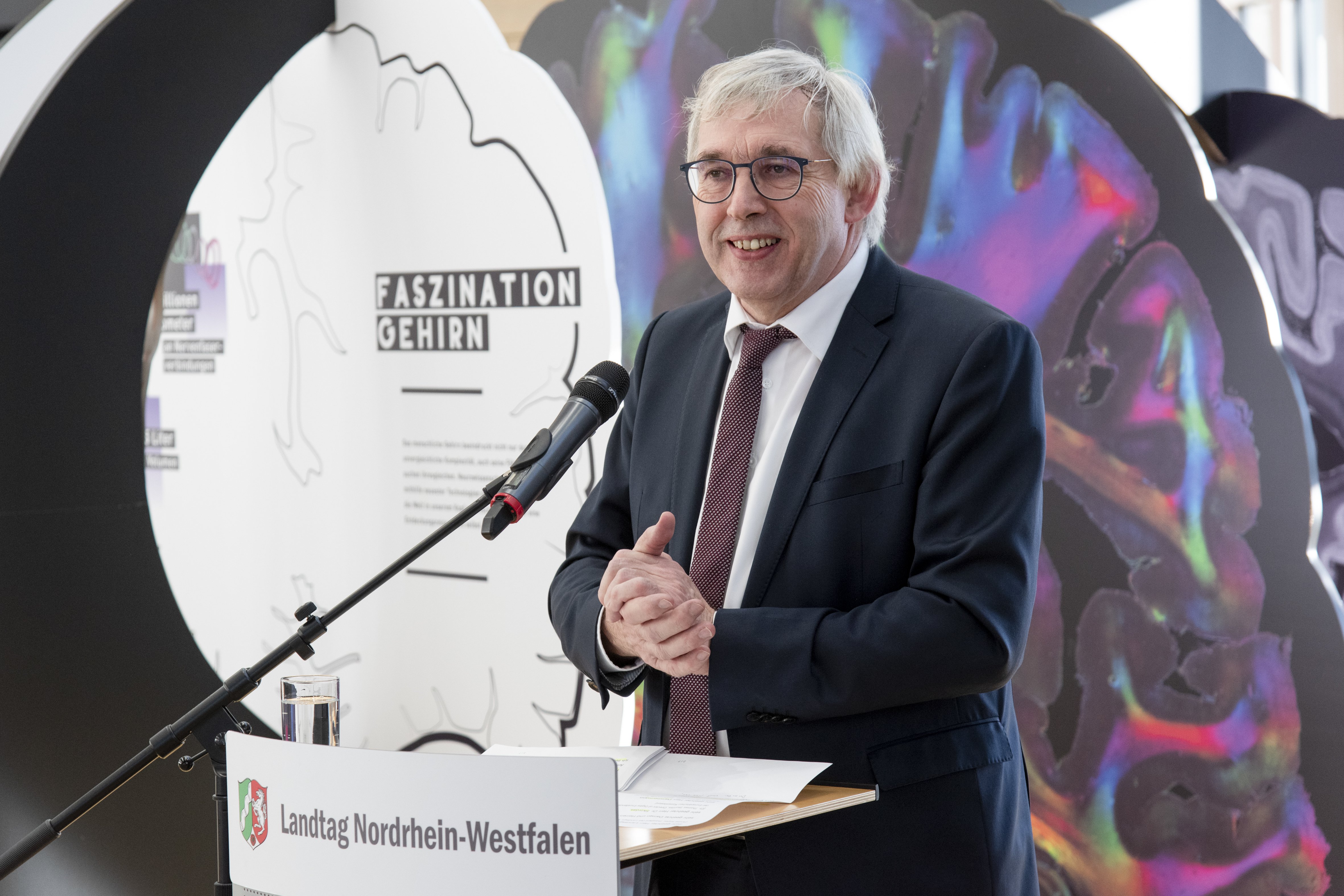
Photo © Kurt Steinhausen/Forschungszentrum Jülich
Klaus Kaiser, Parliamentary State Secretary in the Ministry of Culture and Science stressed the importance of European cooperation. “Particularly at this time, when we position ourselves as Europe on the world stage, this is absolutely necessary and very welcome. The achievements of the Human Brain Project show impressively that close cooperation in interdisciplinary research can result in something that is greater than the sum of its parts. We are proud that it is so firmly anchored here in North-Rhine Westfalia. ”
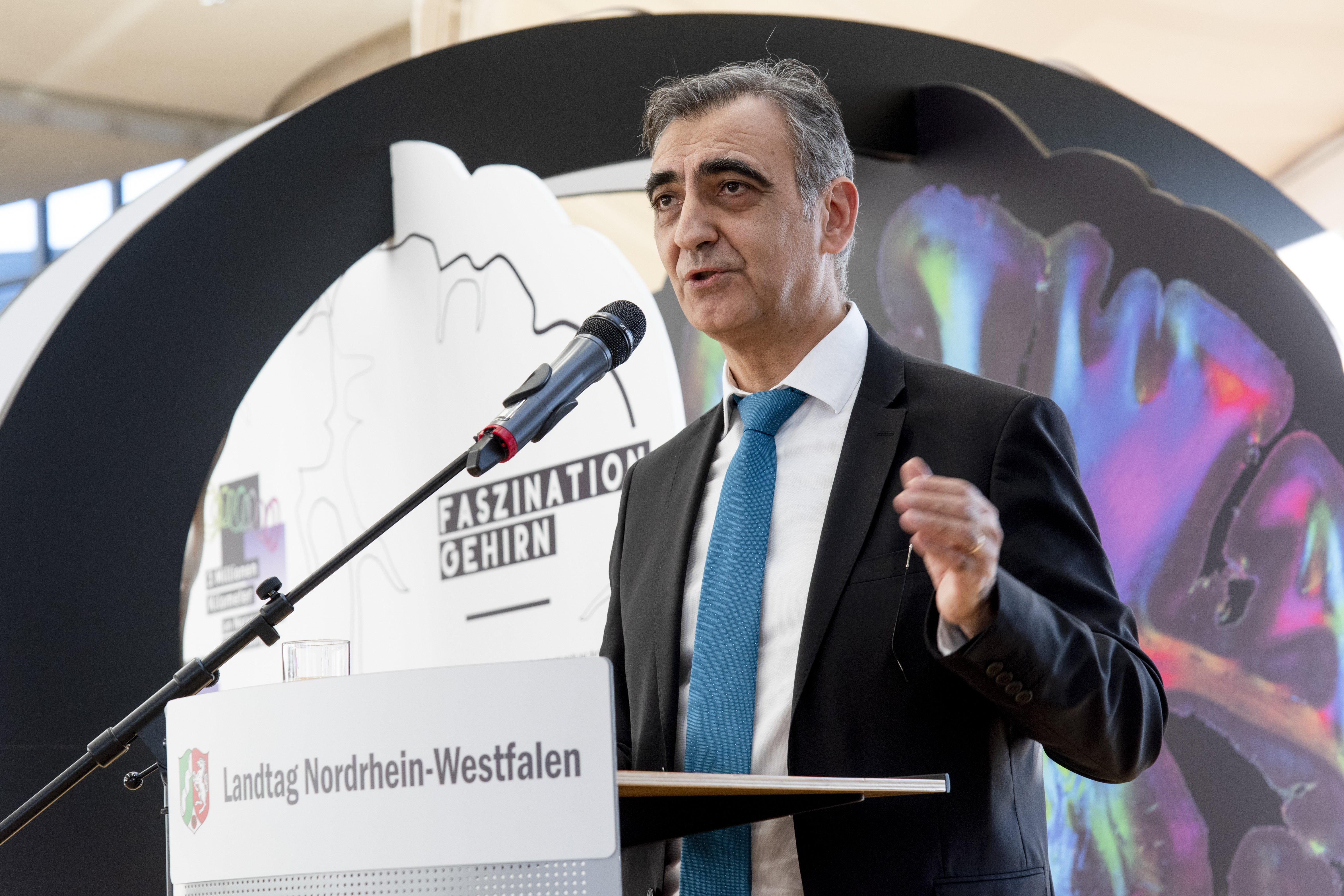
Photo © Kurt Steinhausen/Forschungszentrum Jülich
Thomas Skordas, Director of Digital Excellence and Science Infrastructure of the European Commission emphasized that the Human Brain Project is addressing key challenges of brain research and has delivered many valuable results in the quest to further understand the brain. “The research infrastructure EBRAINS that it develops is a key tool for neuroscience and absolutely essential to be able to continue our leadership in neuroscientific research in Europe.” Different European programmes in brain science and computing research now work together, the Human Brain Project and EBRAINS play a central role in this: “We link it to the best supercomputing capabilities that are build up within the EuroHPC Strategy and with computing capabilities all over Europe”, Skordas said.

Photo © Kurt Steinhausen/Forschungszentrum Jülich
The guests, many of them members of the parliament, were then guided by Prof. Amunts through the exhibits, which showed how computationally intensive methods accelerate new findings for the neurosciences, and applications in medicine, computing, artificial intelligence and neurorobotics.
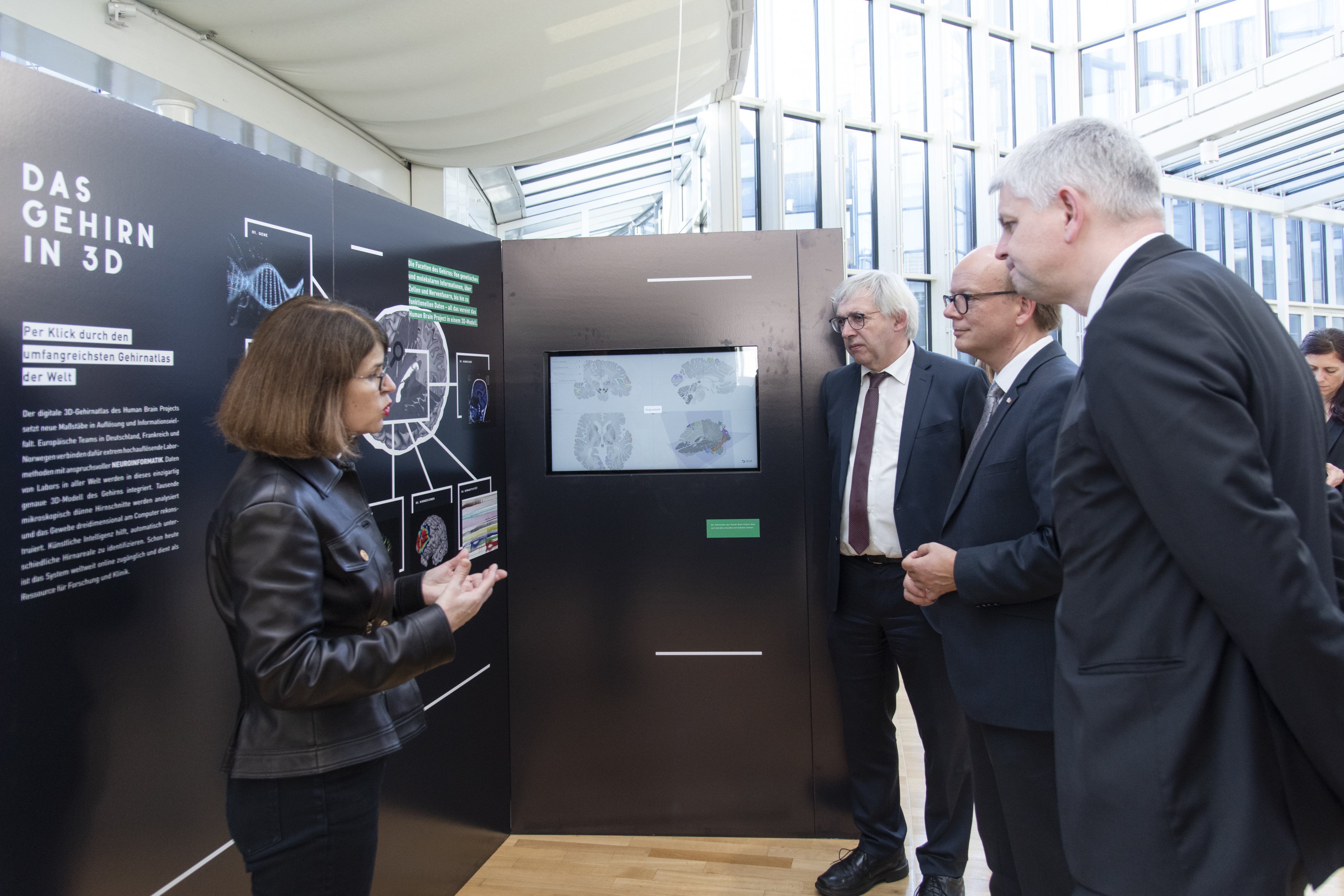
Photo © Kurt Steinhausen/Forschungszentrum Jülich
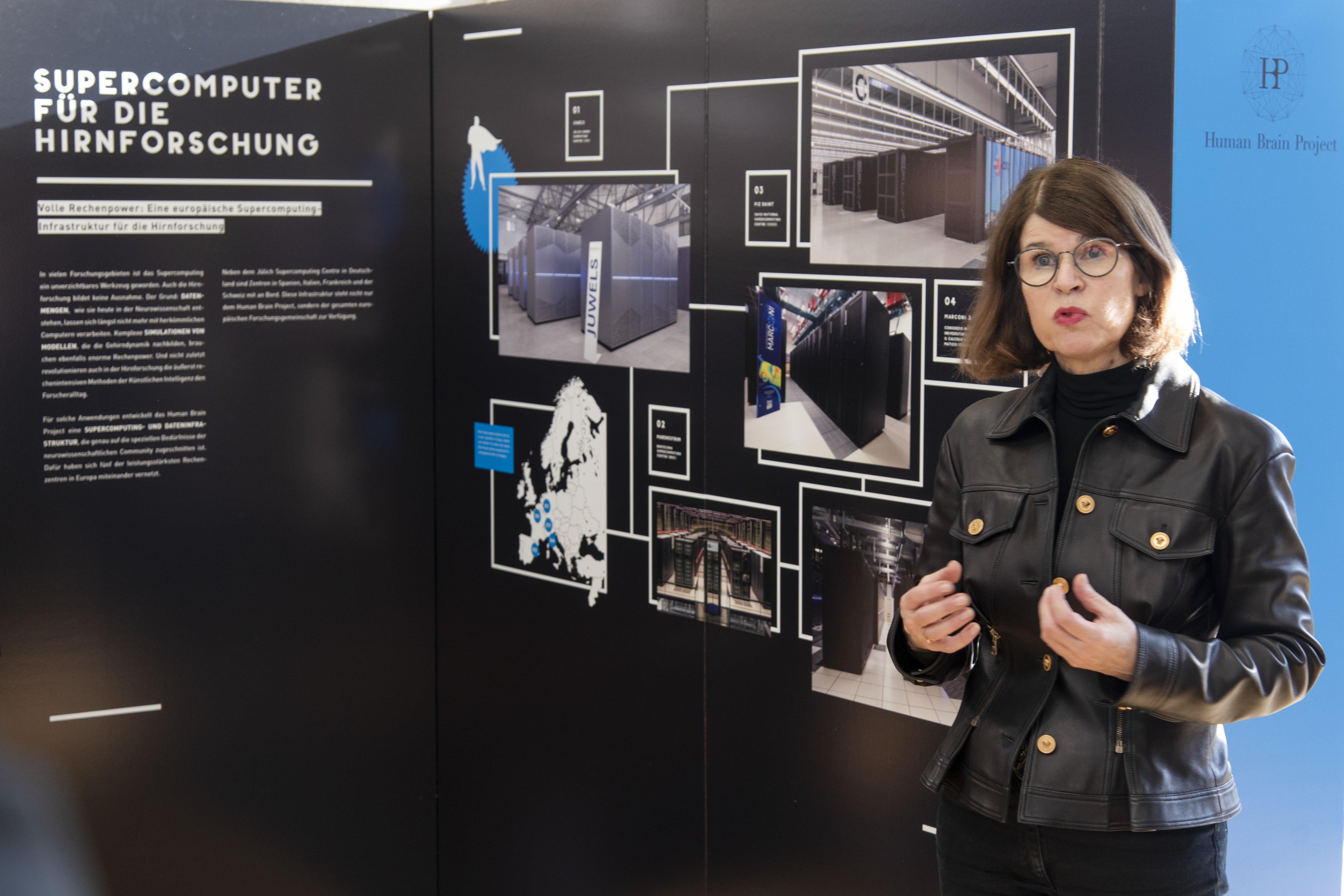
Photo © Kurt Steinhausen/Forschungszentrum Jülich
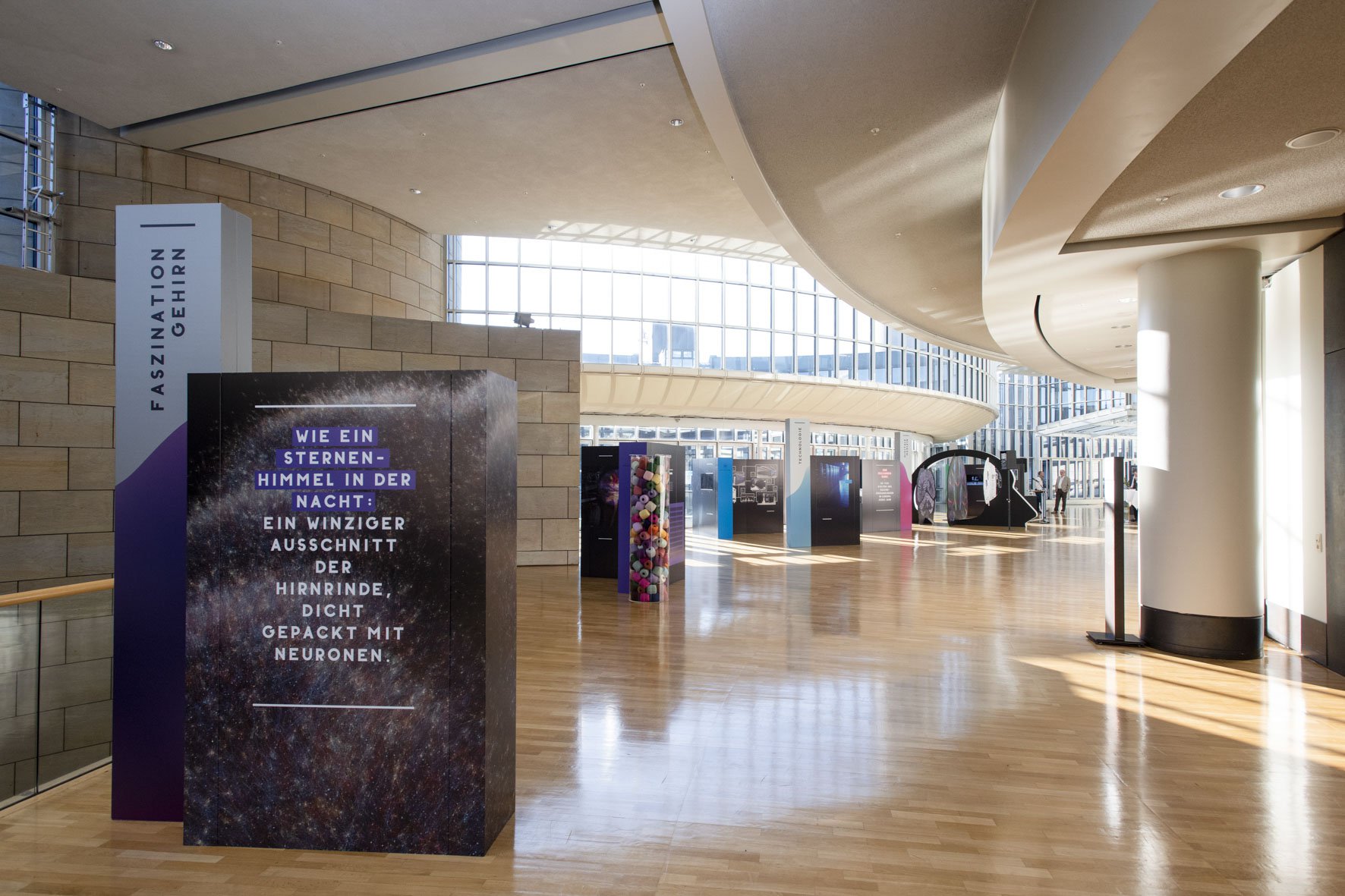
Photo © Kurt Steinhausen/Forschungszentrum Jülich
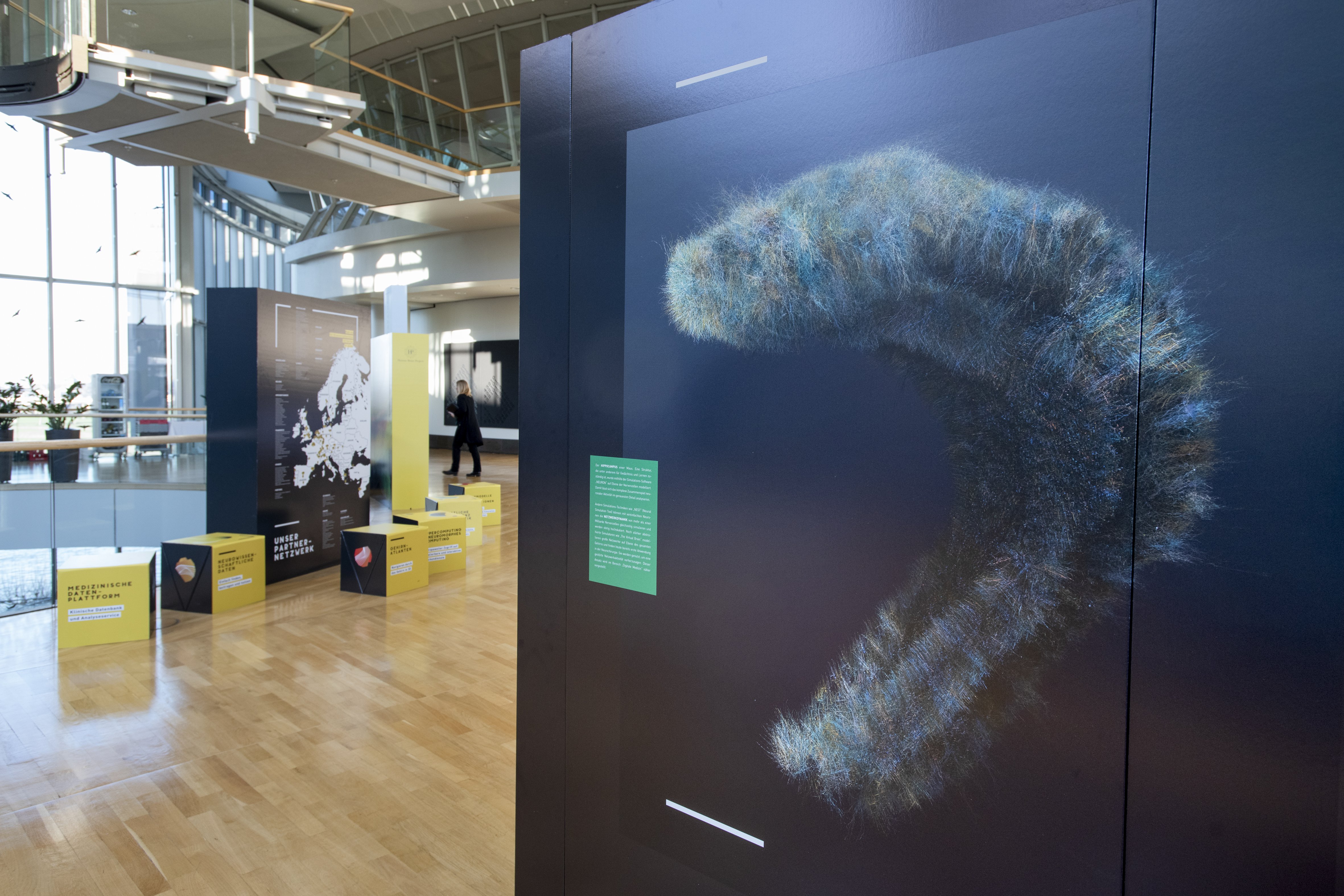
Photo © Kurt Steinhausen/Forschungszentrum Jülich

Photo © Kurt Steinhausen/Forschungszentrum Jülich
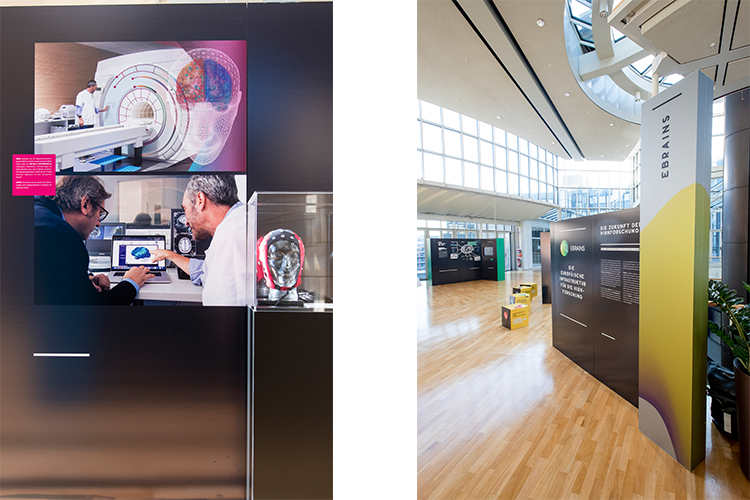
Photo © Kurt Steinhausen/Forschungszentrum Jülich
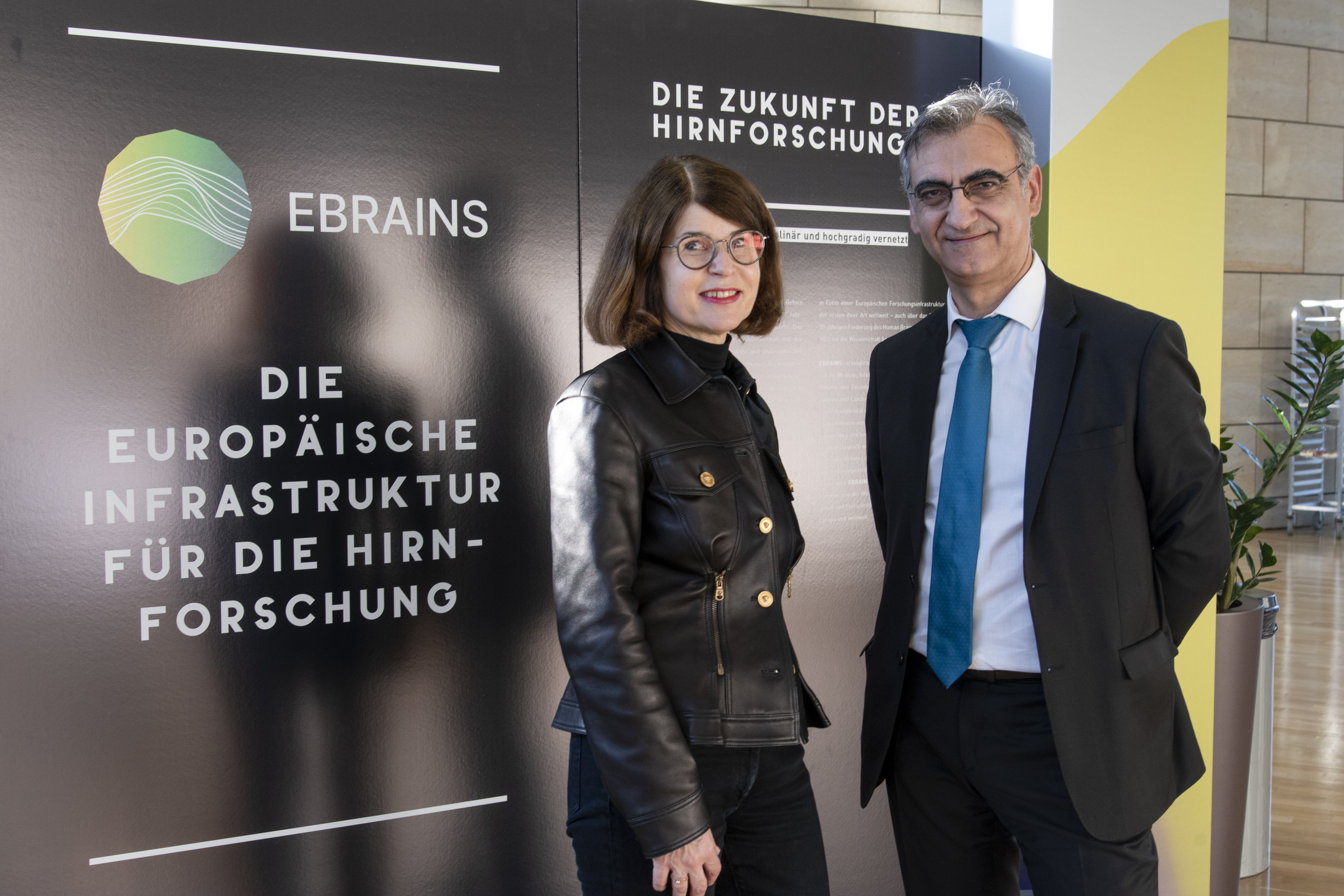
Photo © Kurt Steinhausen/Forschungszentrum Jülich



